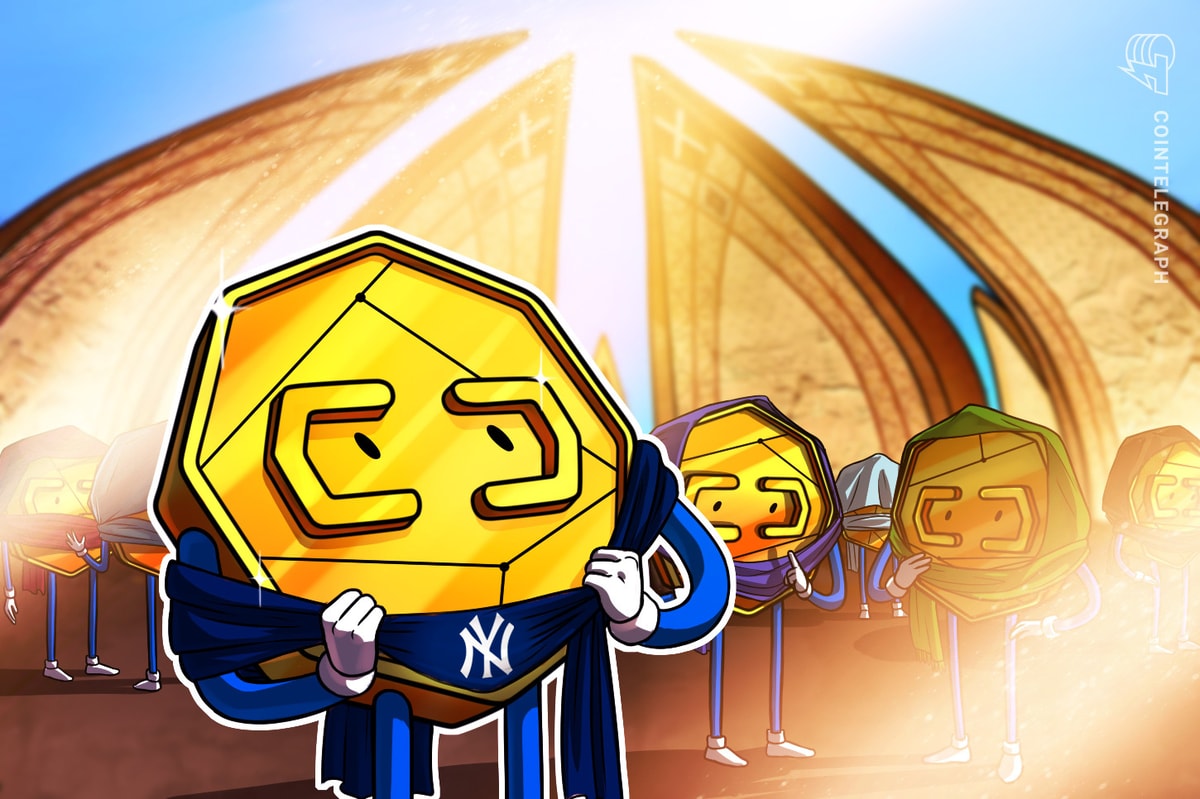Despite gathering little attention throughout the bear market, Telegram-integrated blockchain, The Open Network (TON), is the fastest growing major Layer 1 chain in 2024.
TON’s total value locked (TVL) has increased 27 times to $386 million from $14 million this year, outpacing all competing Layer 1s and Ethereum Layer 2s on a percentage basis. The network’s native token, Toncoin, has surged too, boasting the 5th largest year-to-date gain among the top 50 tokens per CoinMarketCap, displacing competing Layer 1 Cardano from the top 10.
The Open Network’s rapid ascent began in February with the launch of its Open League incentives program. The network’s ad-sharing program and Tether partnership have also driven activity and token price. TON’s growth showcases how a web2 app can successfully be a foundation for a strong web3 ecosystem, especially with a pre-existing user base of over 900 million monthly active users (MAU), like Telegram has.

SEC Scrutiny
Originally founded in 2013 by Pavel and Nikolai Durov, Telegram is the 4th most popular messaging app in the world by MAU.
Recently, in an interview with Tucker Carlson, Telegram CEO Pavel Durov stated: “We’ll probably cross one billion monthly active users within a year now”.
The official Telegram team launched its blockchain, TON, in 2018 but faced scrutiny from the Securities and Exchange Commission (SEC) and was forced to shut down operations.
In 2021, the project restarted development under the stewardship of the TON Foundation, which operates adjacent to Telegram.
TON of Incentives
But it’s been the last few months when the ecosystem started taking off. Bootstrapped by its incentives program called the “Open League”, the TON foundation is providing a multi-season rollout of $TON incentives.
The Open League will distribute over $150M in rewards across the course of the program, split amongst a variety of categories such as DeFi, NFT, Token, and App ecosystems.
As of March, Telegram announced its ad-sharing program built on TON. Channel owners that qualify will receive 50% of the revenue that Telegram makes from ads displayed in the respective channels, and payment distributions and withdrawals are moved exclusively through the TON blockchain.
Built on Telegram
The majority of TON”s infrastructure is built on top of the messaging app, Telegram, to leverage its existing user base. TON-native wallet solutions such as Tonkeeper can operate directly within the messaging app. Tonkeeper wallets are also available as a separate mobile app or as a web application, and is currently the number 1 ranked finance app on Google Play.
Tonkeeper transactions are routed through a Telegram channel, similar to how other Telegram bots function. These wallets allow for self-custody, payments, transfers, and access to applications such as NFT marketplaces, but instead of interacting with an installed browser extension, like most other Layer 1 chains, the functions are hosted in Telegram.
TON raised $250 million in a 2022 round including Mask Network, FJ Labs, and MEXC Venture. The network also has strategic support from firms such as Animoca Brands and OKX. Last month, Pantera Capital announced their investment into TON, citing it as their “largest investment ever”.
Pantera partner Ryan Barney wrote in a May 8 letter, “By leveraging Telegram’s vast user base and seamless UX with the vibrancy of TON’s emerging ecosystem, we believe TON has the potential to become one of the largest crypto networks.”
DeFi on TON
Still in its infancy, TON’s on-chain economy is small compared to Toncoin’s market cap of $17 billion. While its TVL soared this year, competitors such as Sui boast 85% more assets held in smart contacts and more native dApps, despite being valued nearly 70% lower.
A sizable amount of the on-chain activity on TON takes place on the chain’s largest native decentralized exchange (DEX), STON.fi, which hosts 67% of the total TVL. Outside of STON.Fi, and TON’s leading liquid staking solution, Tonstakers, DeFi on The Open Network is limited to a few small lending and derivatives platforms.
Asynchronous Payments
TON runs an asynchronous payment channel via two interacting networks called shard chains, that finalize transactions independently, and then confirm their states to the payment channel’s smart contract.
This is different from other network designs, including Solana’s and Ethereum’s, which have synchronous payments, where one cannot begin the next transaction in a contract without confirmation of the initial transaction.
On TON, the execution of smart contract functions will take place in a future block as opposed to the block the transaction is confirmed in. This can help the network handle high volumes of complex smart contract interactions.

TON’s developer community is small. Electric Capital cites 175 monthly active developers on TON as of Dec. 31, 2023, compared to Solana’s 1,615. Despite this, TON touts the second-highest two-year growth percentage in terms of active developers, surpassed only by Celestia.
The Future of TON
One of the primary goals for 2024 will be cross-chain interoperability, by integrating compatibility with Ethereum token standard ERC-20 , a founding member of the TON Core Dev Team, known as Dr. Awesome Doge on social media, said at the Web3 Festival held in April.
The developer also said the team is building bridge support for other blockchains, including Bitcoin and Solana.
Meanwhile, the token continues to outperform. Toncoin was the 13th best performer out of the 100 biggest coins by market cap in the past seven days, according to CoinGecko.
The Open League incentives program is still underway and preparing to begin its Season 4. Season 3 concluded on May 29, and the TON foundation is currently accepting and reviewing applications for the next season’s participants.
Read More: thedefiant.io









 Bitcoin
Bitcoin  Ethereum
Ethereum  Tether
Tether  XRP
XRP  Solana
Solana  USDC
USDC  Dogecoin
Dogecoin  TRON
TRON  Cardano
Cardano  Lido Staked Ether
Lido Staked Ether  Wrapped Bitcoin
Wrapped Bitcoin  Hyperliquid
Hyperliquid  Wrapped stETH
Wrapped stETH  Sui
Sui  Chainlink
Chainlink  LEO Token
LEO Token  Stellar
Stellar  Avalanche
Avalanche  Toncoin
Toncoin  Bitcoin Cash
Bitcoin Cash  Shiba Inu
Shiba Inu  USDS
USDS  Hedera
Hedera  WETH
WETH  Litecoin
Litecoin  Wrapped eETH
Wrapped eETH  Monero
Monero  Binance Bridged USDT (BNB Smart Chain)
Binance Bridged USDT (BNB Smart Chain)  Polkadot
Polkadot  Ethena USDe
Ethena USDe  Bitget Token
Bitget Token  Pepe
Pepe  Coinbase Wrapped BTC
Coinbase Wrapped BTC  Pi Network
Pi Network  WhiteBIT Coin
WhiteBIT Coin  Aave
Aave  Uniswap
Uniswap  Dai
Dai  Ethena Staked USDe
Ethena Staked USDe  Bittensor
Bittensor  OKB
OKB  Cronos
Cronos  BlackRock USD Institutional Digital Liquidity Fund
BlackRock USD Institutional Digital Liquidity Fund  Aptos
Aptos  NEAR Protocol
NEAR Protocol  Jito Staked SOL
Jito Staked SOL  Internet Computer
Internet Computer  Ondo
Ondo  Ethereum Classic
Ethereum Classic